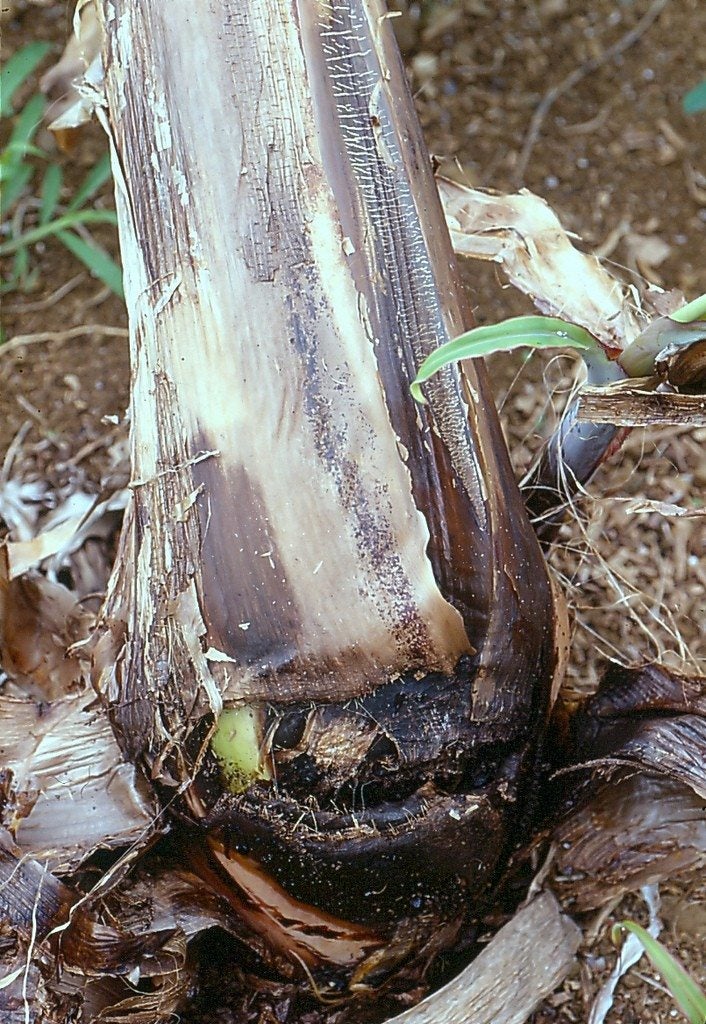Soft Rot Disease: How To Help Prevent Soft Rot Bacteria


Bacterial soft rot disease is an infection that can devastate a crop of fleshy vegetables such as carrots, onions, tomatoes, and cucumbers, though it is most widely known for its attacks on potatoes. Soft rot disease is most easily recognized in these vegetables by soft, wet, cream to tan colored flesh surrounded by a dark brown to black ring. When conditions are right, these necrotic spots begin on the outside or skin of the potato and work inward. Initially, there is no odor, but as the soft rot disease progresses, secondary infections invade, and the blackened potato emits a foul smell. These symptoms are similar in most other affected plants as well with small, water-soaked, translucent spots on leaves, stems, or underground parts.
What is Bacterial Soft Rot?
Soft rot bacteria, or Erwinia cartovorum, is unfortunately found everywhere. It survives in soil and water sources, even oceans, and is found all over the globe. Almost all commercial crops are affected to some degree by soft rot. Bacteria in the home garden can be introduced by insects, windblown rain, or leftovers from the previous year's crop. One of the most common culprits on potatoes is the seed potato itself. The soft rot bacteria can be found on almost all tubers but most commonly affects potatoes. The infection occurs through skin damage due to growth cracks or injury and high soil temperatures combined with excess water provide the perfect growing conditions. Very often, signs of bacterial soft rot will not occur until after harvest. This is largely due to improper handling of the newly harvested potatoes. There is no completely effective soft rot treatment, but there are things you can do to minimize the damage.
Tips for Controlling Soft Rot Bacteria
Once soft rot bacteria have infected plants in the garden, there is no effective treatment. You will need to remove and dispose of infected plants as soon as possible to avoid further damage to other plants. Prevention is key in controlling soft rot bacteria. The following steps can be taken to help avoid this problem in the garden:
- Avoid wet conditions. Make sure plants are in well-draining soil and properly spaced. Keep track of watering to prevent too much moisture.
- Rotate crops with rot-resistant vegetables. Crop rotation goes a long way in managing or preventing problems in the garden. When rotating crops, select varieties that are less susceptible to soft rot like corn, snap beans, and beets. If you have had previous issues with soft rot disease in the past, wait at least three years before growing susceptible crops in that area.
- Use caution during garden maintenance. As you go about normal weeding tasks or even harvesting, take care not to damage plants or veggies. Harvest only when conditions are dry and closely examine vegetables for any signs of problems that may affect storage, which should be in a cool, dry, and well-ventilated location.
- Keep the garden and tools clean. Be sure to clean garden tools thoroughly before and after use to avoid spreading any potential disease and always remove any infected/damaged plant debris remaining in your garden once the season is over.
Gardening tips, videos, info and more delivered right to your inbox!
Sign up for the Gardening Know How newsletter today and receive a free copy of our e-book "How to Grow Delicious Tomatoes".

Jackie Rhoades began writing for Gardening Know How in 2010.
-
 Looking For Plants To Give You The Soft And Fuzzies? Try These 5 Fuzzy Leaf Plant Options
Looking For Plants To Give You The Soft And Fuzzies? Try These 5 Fuzzy Leaf Plant OptionsLovers of texture, drama, silver foliage and tactile plants will adore these special sensory garden additions. These fuzzy leaf plant options will leave you all aglow
By Susan Albert
-
 Get Ready For A Summer Of Hummers! Grow These Full Sun Hummingbird Plants and Flowers
Get Ready For A Summer Of Hummers! Grow These Full Sun Hummingbird Plants and FlowersIf you’re lucky enough to enjoy a sunny backyard, make sure you are maxing out on your pollinator opportunities and grow these full sun hummingbird plants and flowers
By Tonya Barnett